|
2nd August 2015, Ainsdale
I feel this is worth a return journey having missed it last year. I am still wondering about Green-flowered Helleborines, and the Dune Helleborines are always a delight; to me at least. The latter are well represented; I gave up counting at 150, and that was just those seen as we made our way through the fringes of the woodland in an anti-clockwise direction. The only things worth reporting were that some were heavily infested with aphids, while there were a couple of plants with rather dense inflorescences - would these be a dry weather effect?
The Green-flowered helleborines seem to be var pendula, with very white flowers and very droopy before they open. There are no indications of fertilisation before the flowers opening. One plant had a single double flower, whith douvle each sepal, petal and column, and single ovary.
One oddity is a single Broad-leaved Helleborine growing in the woods, close to both of the other species. It has quite colourful flowers, but a lot of aphids. There no others of the species around, but the clear presence of a viscidium on one newly opened flower seals its identity. Even so, there is something a little odd about this plant.
Noted for the first time were Pyramidal Orchids on the margin between dunes and tress, and Common Twayblades within the woodland.
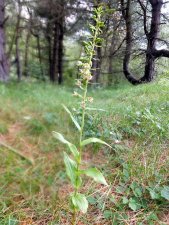 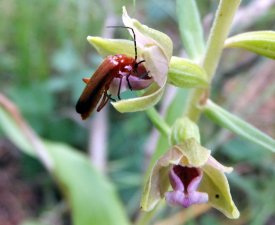 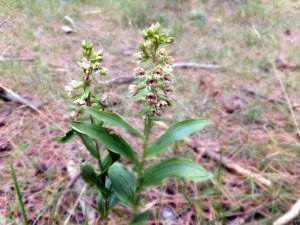
The Dune Helleborines including a boozy beetle and a denser flowered example
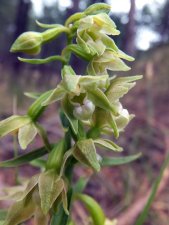 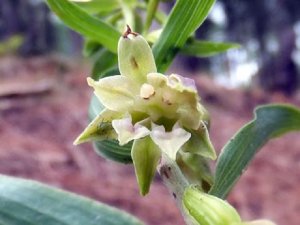
Green flowered Helleborines with a double flowered example
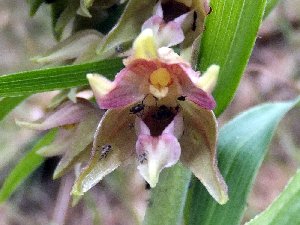 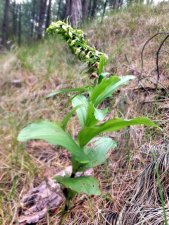
The Broad-leaved Helleborines
2nd August 2013, Formby
Only a couple of miles from Ainsdale, and it could be easy to assume that the two localities are part of one older one, but the pine woods in which the Formby Dune Helleborines grow are artificial; they are planted in straight lines at regular intervals. Further, the Dune Helleborines here grow under the pines, while at Ainsdale they prefer the more fringes of the deciduous woods. It is the GFH there that are in the pines - strange.
Once, when I first saw them the Dunes grew closer to Lifeboat Road, but now they grow sparsely and a bit further away; I count 25 in total. Yet again they are not flowering despite having the obvious same weather. It must be the lower light and perhaps poorer soils that retard these from flowering. And again, some have been nibbled or broken off. Where they grow shows all the signs of youth gatherings in the evenings, which cannot help them.
3rd August 2015, Dolgoch Quarry
An internet search of nearby nature reserves throws up two sites, both reasonably local, not visited for orchids before, and both in former limestone quarries with a bit of woodland. The blurb on the internet seems to concentrate on the bird life, and no mention is made of orchids. But worth a try.
Pisgah Quarry yields nothing. Dolgoch Quarry is a place I thought I had been to years ago looking for fossils, but no way resembles my memories. Whatever, it does look a likely orchid site, though at this time of year only a few well past it Pyramidal Orchids are evident.
6th August 2015, Coalbrookdale
Driving back from the Cotswolds it is a short detour to the Violet Helleborines here. Hopefully they are now in flower. Unfortunately they are not, either on the roadside site or in the woodlands. They do show some development with the large woodland plant now fully erect. The possible var rosea is definitely not, but does at least have some good violet leaf colouration.
There are other recent records from the area, scattered over a few square miles. I am now thinking that these plants are remnants of a large but sparse colony from pre-industrial days. Perhaps then the population density was greater, but the whole area should perhaps be regarded as one large colony, albeit widely dispersed now. Next year perhaps a look for others in the area armed with BSBI information.
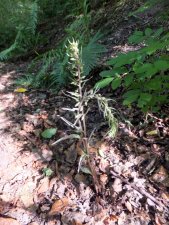 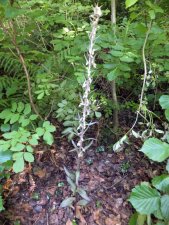 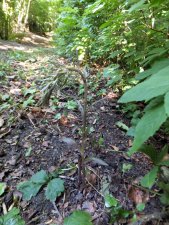 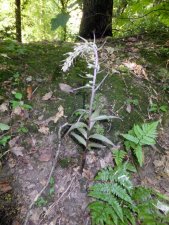
6th August 2015, Leckhampton
Having heard that the `Achlorophyllous' Broad-leaved Helleborine had started to flower I cannot resist a return, just for the day, to see it for myself and get some photos. Though the open flower report was 5 days previous, there are still only 2 open and one just unfurling. A viscidium is clearly visible, which together with the overall flower shape and companion plants, confirms the species. It clearly is an usual orchid, if not unique, and likely to be my rarest find. Not only is it chlorophyll deficient, but also deficient in pink/purple anthocyanin deficient, giving it an overall straw colour. Other chlorophyll deficient BLH have been described as a rare variety, E. helleborine var. monotropoides, they still show pink colouring on the flowers. A more detailed description of this plant with my thoughts on how this plant arose is included elsewhere here.
Coincidentally the closest neighbour is an E. helleborine var. chlorantha (often and mistakenly referred to as var viridiflora). Is this coincidence or in part related to the subject plant. Another nearby BLH has a rather dainty appearance with a lax-flowered spike and uncurled sepals giving the flower a star-like look. The other BLH are all typical, with some quite deeply coloured forms.
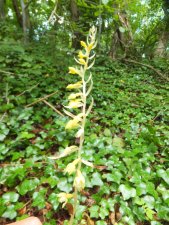 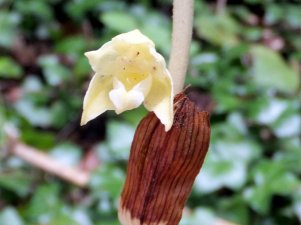 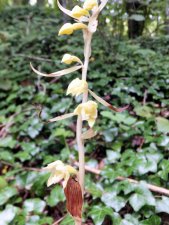 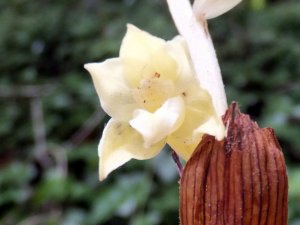 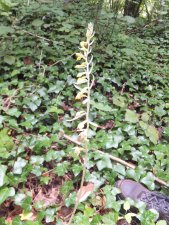
The achlorophyllous and unpigmented plant
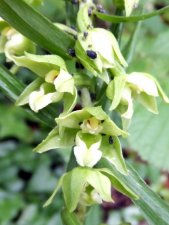 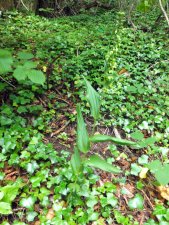 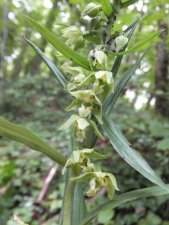
the Var chlorantha plant
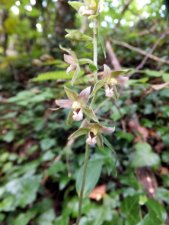 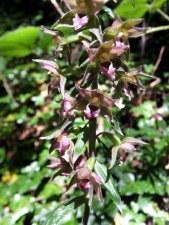 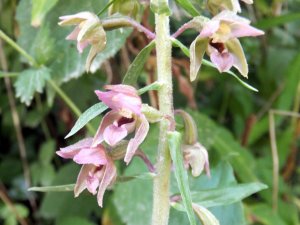 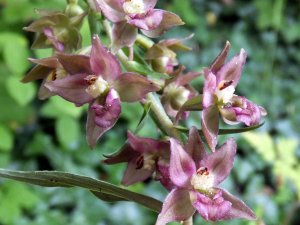 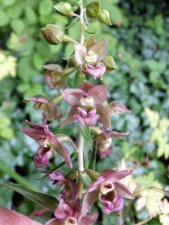
The other Broad-leaved Helleborines including the `dainty' form first picture
6th August 2015, Birdlip Woods
Having traveled all the way to the southern Cotswolds it makes sense to revisit a couple of other sites. The Narrow-lipped Helleborines here were only just starting to open on the last visit a fortnight ago. The group furthest from the village, which had started to open were nearly finished, while the other group were still far from opening. This must be an effect of light and soil moisture differences. A couple of single plants, not seen previously, were found. One grew at the roadside.
A stem with old seed pods from last year's Bird-nest orchids is also seen.
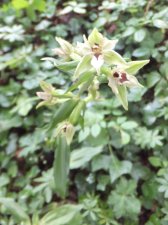 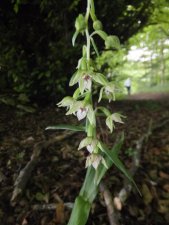 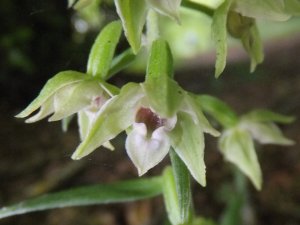 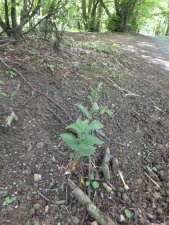
6th August 2015, Barrow Wake
Visited again in passing I am surprised to see some Musk Orchids still in good flowering condition, though most have gone over.
The other discussion point at this site is whether one or more Broad-leaved Helleborines show neerlandica like features, as I was reliably informed. These should be shorter than normal, with a very dense flower spike, dull purple flowers, and leaves more grouped around the base of the stem. The first two plants have none of these features even though they grow where I was told to expect the `neerlandica'. The third, shown in two pictures, does have some commonality with neerlandica, but is quite taller than I am led to expect. Added July 2016: Despite that having seen photographs of the plants assigned to this taxon I am now more convinced these plants could be called neerlandica type
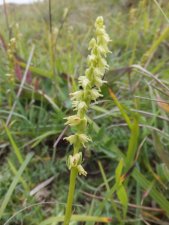 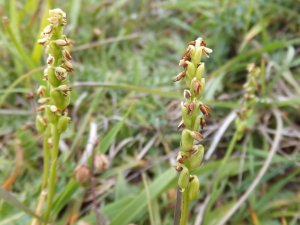
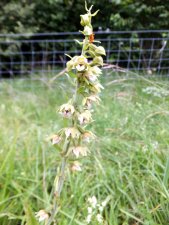 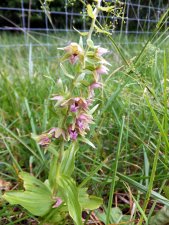 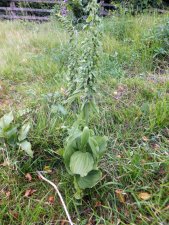 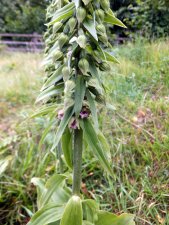
18th August 2015, Coalbrookdale
As I am passing nearby again, I have time to pop in and see if the Coalbrookdale Violet Helleborines are in flower yet. Yes they are. Not in full bloom but good enough. The tall plant in the woods is particularly impressive
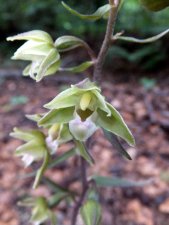 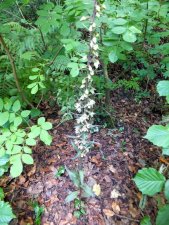 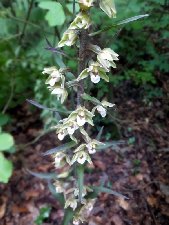
26th August 2015, Coalbrookdale
I am here yet again, again in passing on my way back from Belgium. While there I had a message that an E. purpurata var. rosea is growing close to the roadside site. Armed with a pinpoint grid reference I find it easy enough, though scaling the steep bank to photograph it is not. It is wet after considerable rain, and dark enough to trigger the camera's autoflash. It is best described as a partial rosea, but that is good enough for me ..... ay least until I see a full-blown example.
This area was checked for orchids in 2013 and none were found, though that was probably because we didn't look as high up the bank to see it. It's nice to round off the season with a new tick on my Seen List.
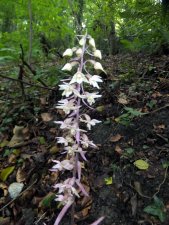 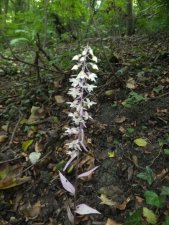 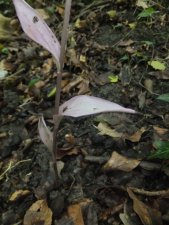 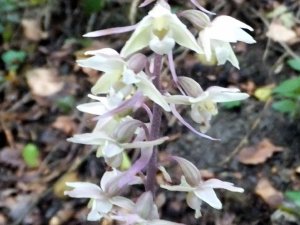
4th September 2015, Gop Hill
Firstly, I hope no-one minds me slipping one September date into this August folder.
Gop Hill has an interesting statistic. It hosts both the earliest and latest flowering orchids in the U.K. The Autumn Lady's-tresses also grow in roughly the same band across the hillside as the Green-winged Orchids; must be something in the soil. Here they are quite numerous compared to where I have seen them before, but still do not provide carpets of flowers as seen at places like Sker Point near Bridgend. They are mostly single plants, with some groups of two or three. They also seem to be more robust and taller compared to those on Great Orme. The field had obviously been home to sheep and other farm animals in the recent past, but the ALTs were untouched. Still, one had to be careful where one knelt or laid down to take photographs.
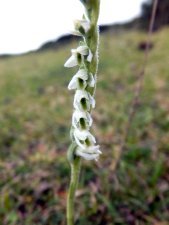 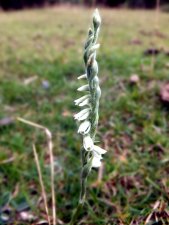 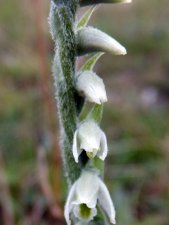 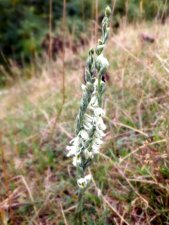 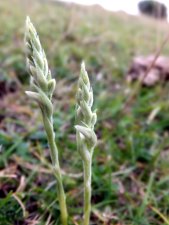
   
|


















































